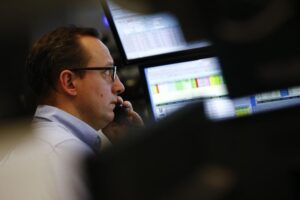One of the biggest economic surprises of the past few years is that “revenge travel” has had such staying power. It made sense that 2022 was a very busy travel year as pandemic restrictions came down and many people became comfortable flying again. The Transportation Security Administration screened 760 million passengers in 2022, a staggering 30 percent increase over 2021’s COVID-diminished total.
The surprise was that 2023 topped 2022 by a wide margin (+13 percent) and 2024 is on pace for another record (through Oct. 22, TSA screenings are 5 percent ahead of last year’s figures). Since Labor Day, however, the year-over-year growth rate has slowed to a crawl (+1 percent). Travel demand is flattening out. To be fair, it’s plateauing at a high level. Still, it appears that consumers’ willingness to travel — or maybe it’s better termed as consumers’ ability to afford to travel — is leveling off after a period of sharp increases.
Have a question about credit cards? E-mail me at ted.rossman@bankrate.com and I’d be happy to help.
Looking ahead to the upcoming holiday travel season
More than 8 in 10 holiday travelers (83 percent) are changing their plans due to inflation, according to our recent holiday travel survey. That’s a shockingly high figure. With the upcoming election as a case in point, I’ll note how difficult it is to get 83 percent of Americans to agree upon anything.
Among these inflation-weary holiday travelers, the top modifications are traveling for fewer days than they otherwise would have (32 percent), picking less expensive accommodations and/or destinations (30 percent) and driving instead of flying to their destination (28 percent). To be clear, these are people who are still planning to travel for the holidays, but now they’re just traveling differently. They don’t want to skip the trip, but they’re willing to cut corners to save money.
Cutbacks are underway elsewhere, too
Our early holiday shopping survey revealed that 34 percent of holiday shoppers are changing their buying habits due to inflation and only one in four holiday shoppers plans to spend more than they did last year.
Broadening out a bit, PwC reports that 85 percent of Americans are considering cutting their spending over the next six months, “primarily in nonessentials like dining out, clothing and luxury items.”
Dining out is similar to travel in that it’s a discretionary expense that benefited from the post-pandemic rush to get out and do the things that we missed out on for a while. Normally, when people are concerned about their spending, it’s the discretionary stuff that’s the first to go. There have been ample concerns about inflation and high interest rates the past few years, but the “you only live once” attitude that proliferated during and immediately after the pandemic has proven to be a stronger force — until recently.
Like travel, bar and restaurant sales have flattened out in 2024 (as evidenced by this chart based upon U.S. Census Bureau data). That post-pandemic sugar high could only last so long, especially with inflation taking a cumulative 20 percent toll since the beginning of 2021 compared with a 17 percent gain in wages, according to Bankrate’s Wage to Inflation Index. It’s no wonder that the personal savings rate came close to an all-time low in 2022 and has only rebounded modestly.
To be fair, consumer spending is still growing despite the aforementioned slowdowns. But it’s mostly growing because prices are nudging stubbornly higher. In other words, people are spending more, but they’re not really getting more, which is festering the many complaints that people aren’t getting ahead.
So, how good is the economy anyway?
It’s complicated. Hard numbers on unemployment, gross domestic product and consumer spending have been more positive than consumer sentiment for the past several years. And economic inequality has grown, as evidenced by half of credit cardholders lugging expensive credit card balances from month to month (the highest we’ve observed since March 2020), while the other half pay in full, avoiding interest and taking full advantage of rewards, convenience and buyer protections. Credit card delinquencies are at their highest point since 2011, the Federal Reserve reports.
From a macro perspective, inflation’s bark has been worse than its bite. With a key assist from the Federal Reserve’s rate-hiking campaign, inflation has come down substantially without a much-fretted-about recession materializing. Yet to consumers’ chagrin, lower inflation doesn’t mean that prices are coming down broadly. Prices are still growing, they’re just growing more slowly.
It feels like consumers’ attitudes and buying habits have finally started to shift. I’m surprised it took this long. Revenge travel wasn’t just a 2022 phenomenon, it also permeated 2023 and much of 2024 (encompassing adjacent areas such as demand for dining out and live entertainment, such as concerts and sporting events).
During the recent earnings season, big banks lamented outflows from consumers’ deposit accounts. Retailers of physical goods have endured sluggish demand for everything from electronics to home furnishings, sporting goods, toys and more ever since the shift to experiential spending in 2022. September 2024 retail sales were up a mere 1.7 percent from the prior year, the smallest increase since January.
The bottom line
Again, these numbers are still growing, so I’m not saying the economy is in bad shape, but things feel different now than they did even six months ago. Consumers’ once insatiable desire for experiences finally seems to be trending toward a more normal equilibrium. And we’re seeing early signs of a rebound for recently moribund sectors, such as electronics sales and the bedraggled housing market. Nothing lasts forever, not even the YOLO fever that juiced experiential spending over the past few years.
Read the full article here
















